Post-inflammatory erythema, or PIE, is a type of acne scarring that appears on the skin as red spots after a pimple has healed.
While regularly mistaken for post-inflammatory hyperpigmentation, PIE is a slightly more complex condition that takes longer to fade and may stick around for years if not treated and managed correctly.
Fortunately, while the things you can do to help fade PIE are few, and the healing process can take longer than a hyperpigmented spot would take to fade, there are several topical products, lifestyle changes, and even diet modifications that can help improve the appearance of the pesky spots.
Therefore, in this article, I will explain everything you need to know about post-inflammatory erythema, what causes it, why fading it is so hard, and what you can do to reduce the appearance of PIE on the skin and achieve clear, healthy, and uniform complexion.
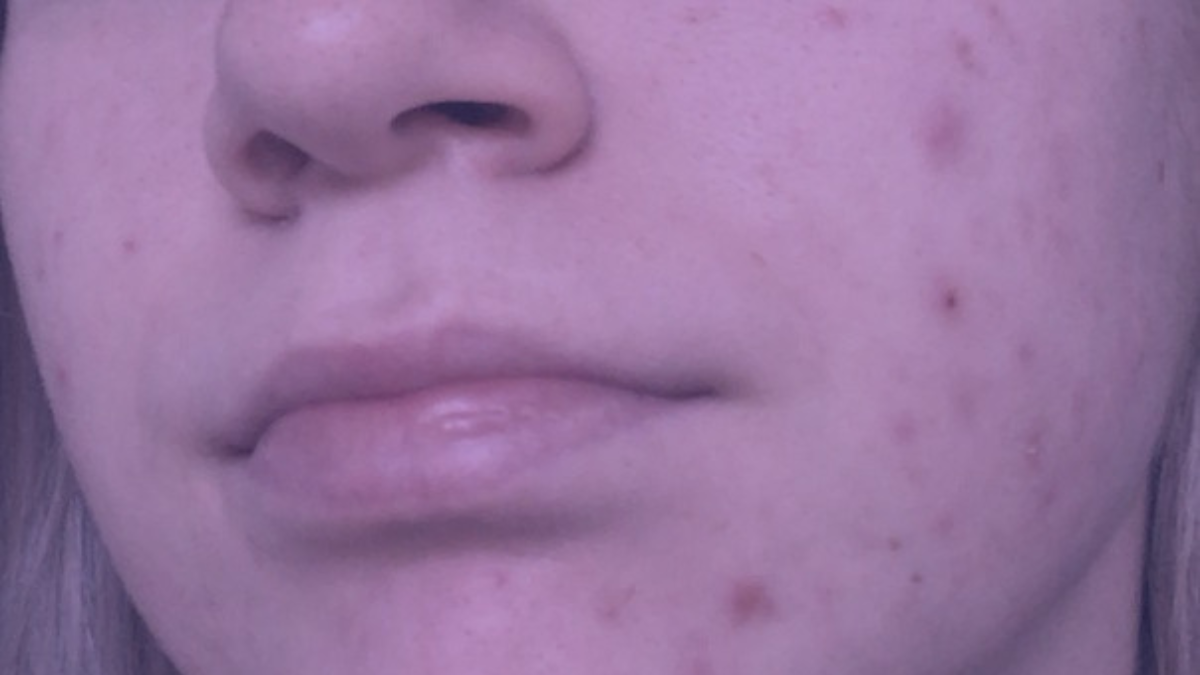
What Is Post-Inflammatory Erythema?
Post-inflammatory erythema or PIE are reddish/pink blemishes that appear when the blood vessels under the skin’s surface are damaged or abnormally dilated due to trauma or injury.
Injury to the skin will trigger an increase in blood flow to heal the vascular wound, causing the blood vessels to dilate to accommodate the increased blood flow, which may cause them to break in some places and appear on the skin as red spots.
PIE can vary from pink, red to deep purple discoloration, depending on the severity and the skin tone, and is more prevalent in those with fair skin.
And while PIE tends to fade over time, it can be a long and frustrating journey for those who have it, as it is often hard to treat and takes a long time to disappear on its own.
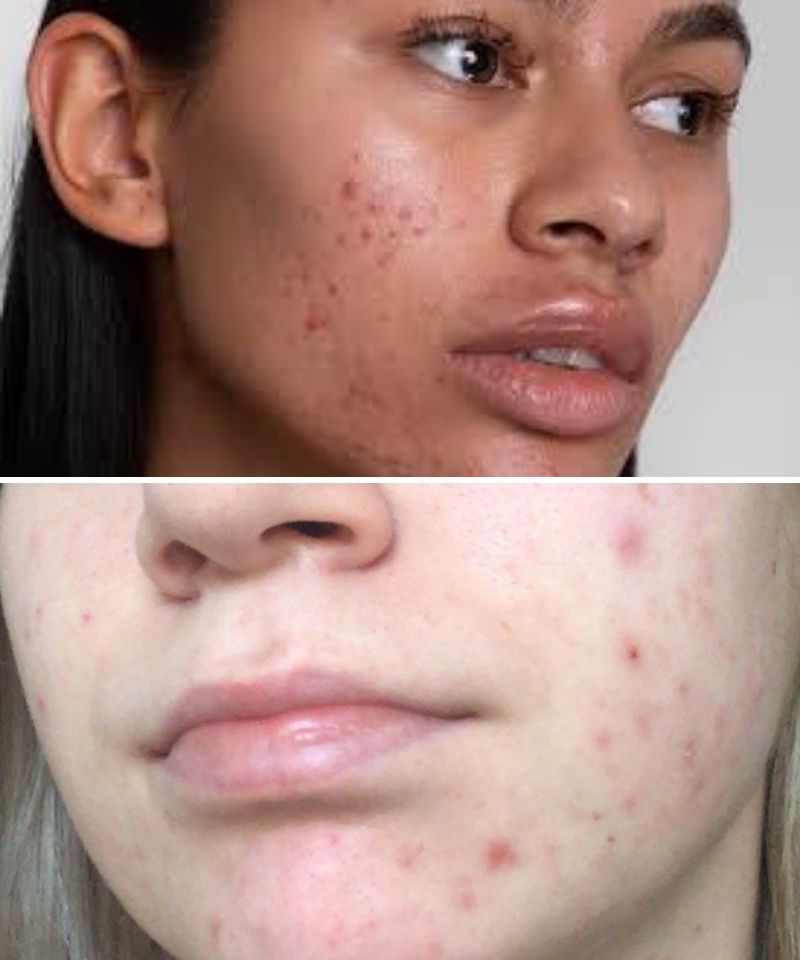
What Causes Post-Inflammatory Erythema?
PIE is caused by moderate to severe inflammation and trauma to the skin.
Here are some conditions or injuries that could trigger PIE in many people:
Acne
Acne is an inflammatory condition that occurs when the pores become clogged with oil and dead skin cells, attracting bacteria that feed on the cellular debris and proliferate.
The bacterial overgrowth triggers an inflammatory response, causing our immune system to send white blood cells to the area to fight the abnormality.
This “war” erupts on the skin in visible redness, swelling, and pus-filled spots we see as pimples.
However, due to the inflammatory response that involved increased blood flow to transport white blood cells to the area, blood vessels may dilate abnormally and even break, and PIE is often what’s left after a pimple has healed.
Chemical Burns
Chemical burns can occur when excessive amounts of strong chemicals, such as those found in some facial exfoliating peels, have caused inflammation on the skin.
This inflammation will compromise the skin’s barrier, causing redness and irritation.
Additionally, due to the redness, which means that the blood vessels have transported more blood and are, therefore, abnormally dilated, PIE may appear after the burn has healed.
Cuts
Depending on how deep the cut is, it can cause minor to severe inflammation in the area right after the injury.
When blood vessels are damaged or abnormally dilated due to trauma, PIE may appear and stay in the area for some time, even after the wound has fully healed.
Eczema
Eczema is an inflammatory skin condition caused by an overactive immune response when in contact with an allergen.
The eczema rash is often pink or reddish-brown and may appear raised or bumpy.
The rash is also accompanied by inflammation, during which the blood flow is increased to the area, resulting in redness and visible blood vessels.
The inflamed vessels may then remain dilated even after the rash has gone, leaving PIE as a result.
Sunburns
Sunburns can be particularly concerning for those already dealing with acne scarring, as the additional trauma and inflammation from a sunburn might exacerbate the appearance of PIE, making it stay on the skin longer than it usually would.
This is because the sun’s harsh rays can damage the skin cells and weaken their ability to renew themselves and heal PIE faster.
Harsh Skincare Products
Using harsh skincare products such as exfoliating scrubs, face masks, and chemical peels can cause skin irritation, inflammation, and increased blood flow to the affected area.
This can then lead to PIE appearing even after the skin has calmed down due to the damage done to the blood vessels.
Allergies
Allergic reactions often manifest as a rash on the skin, particularly in those with sensitive or reactive skin types. This rash causes discomfort and can lead to increased blood flow to the area as your body tries to combat the allergen.
This heightened inflammatory response can cause your blood vessels to dilate abnormally and, in some cases, even break.
So, when the rash finally subsides, you might suddenly notice PIE in the form of small, pink, or red spots appearing in areas where the skin scars easier, such as your cheeks.
How Do You Know If You Have Post-Inflammatory Erythema?
Post-inflammatory erythema can be recognized by pressing a finger on the red blemishes, which will cause them to lose their color briefly, then return to red once you release the pressure.
This is known as the blanching effect and is a sure way to distinguish PIE from other skin issues like rosacea and hyperpigmentation that don’t lose color under pressure.
The Difference Between PIE and PIH
PIE is distinct from PIH (post-inflammatory hyperpigmentation) in that PIE describes residual redness, while PIH describes pigment change or darkening of the area due to melanin overproduction.
Both conditions appear as a result of inflammation, injury, or trauma to the skin but are caused by different mechanisms.
PIE appears on the skin as red, pink, or purple spots which are a result of damaged blood vessels that have not been able to heal correctly, while PIH appears as brown spots and is a result of overproduction of the brown pigment melanin triggered by an inflammatory response.
Both conditions usually appear after a pimple has healed, with PIE being more prevalent in those with fair skin while PIH is more common in those with darker skin tones.
How to Get Rid of Post-Inflammatory Erythema?
Treating PIE can be challenging because the blood vessels can take a long time to repair post-damage, which can prolong the appearance of PIE.
However, there are some ways that you can reduce inflammation and accelerate the healing process to fade PIE faster.
Here’s how to get rid of PIE with simple skincare and lifestyle tweaks:
Topical Treatments
Over-the-counter creams and gels containing soothing and brightening ingredients can help repair skin damage, soothe inflammation, help the blood vessels recover, and relieve visible redness, making PIE less noticeable.
Sun Protection
Protection from harmful UV rays is crucial in managing PIE, as the sun’s rays can increase inflammation and cell damage, worsening redness and slowing down the healing process, making it harder to get rid of the PIE.
Therefore, using a broad-spectrum sunscreen with at least SPF 30 every day is essential for protecting your skin from the sun’s damaging effects and speeding up the PIE healing process.
Professional Treatments
Professional treatments that involve light-based systems will target the damaged blood vessels and help diminish the appearance of post-inflammatory erythema in as little as 2-3 sessions, depending on the severity of the concern and your skin’s ability to repair itself.
Gentle Skincare Routine
A skincare routine that consists of products containing gentle ingredients that will help reduce inflammation is a fantastic way to reduce redness and help the blood vessels repair themselves.
On the other hand, avoid products containing alcohol, fragrances, or other potential irritants that leave your skin dry, stretched, and irritated, as these can worsen PIE by perpetuating inflammation.
Lifestyle Habits
Some lifestyle habits, such as minimizing stress, getting good sleep, and exercising, might help reduce the appearance of PIE in the long run.
This is because these activities help reduce inflammation, speeding up the healing process and getting rid of PIE faster.
For example, stress can increase inflammation that may exacerbate acne, which will increase the potential of PIE formation or worsening of existing red spots.
On the other hand, poor sleep can increase dehydration, making PIE more prominent.
Finally, exercising can help improve circulation, which can make PIE appear worse short term, but good circulation also means your skin is receiving more oxygen and nutrients from the blood, which can help speed up the healing process and fade PIE faster.
Diet
An inflammatory diet consisting of processed and sugary foods, fried foods, and dairy products can trigger inflammatory reactions in the body, leading to hormonal imbalances and causing acne.
This will increase the risk of PIE and slow down healing, prolonging its appearance on the skin.
Therefore, to help your skin heal from the inside out, try to incorporate a balanced menu consisting of antioxidants, complex carbohydrates, healthy fats, and proteins, as these will help the cells repair and renew themselves, thus soothing inflammatory conditions such as acne, and reducing the appearance of PIE.
Additionally, good hydration is another fantastic way to help PIE fade faster, as it can help the skin look more supple and improve circulation, which will help the blood vessels repair themselves faster.
The Best Topical Treatments for Post-Inflammatory Erythema
Topical treatments can help soothe inflammation, allowing the damaged blood vessels to recover, getting PIE to fade faster.
Here are the best topical treatments that can help soothe redness and inflammation and encourage a faster PIE healing process:
Niacinamide
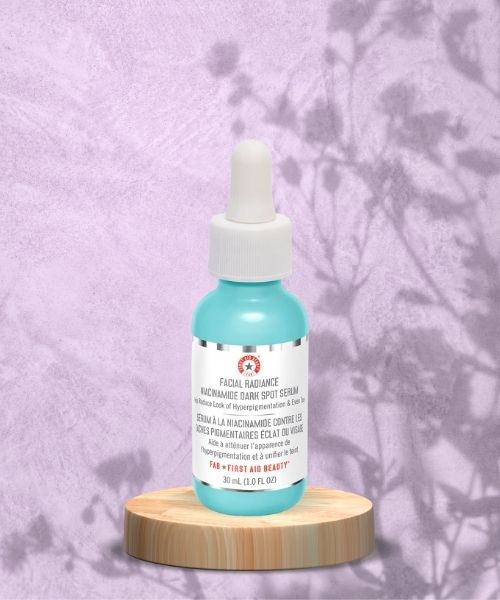
Vitamin B3, known as niacinamide, is a powerful antioxidant that improves the skin’s texture by increasing the natural production of ceramides, which help maintain the skin’s protective barrier.
In addition, niacinamide also has fantastic anti-inflammatory properties, making it particularly good for acne-prone skin and PIE due to its ability to reduce redness and inflammation and keep breakouts at bay.
Finally, niacinamide also has brightening properties due to acting as a melanin inhibitor and lightening post-inflammatory hyperpigmentation, making it fantastic for those dealing with a combination of PIE and PIH post-acne.
Best niacinamide serums:
Best for acne: La Roche-Posay – 10% Pure Niacinamide Serum, $40
Best for sensitive skin: First Aid Beauty – Facial Radiance Niacinamide Serum, $42
Best for dry skin: Sunday Riley – 10% Niacinamide Serum, $65
Vitamin C
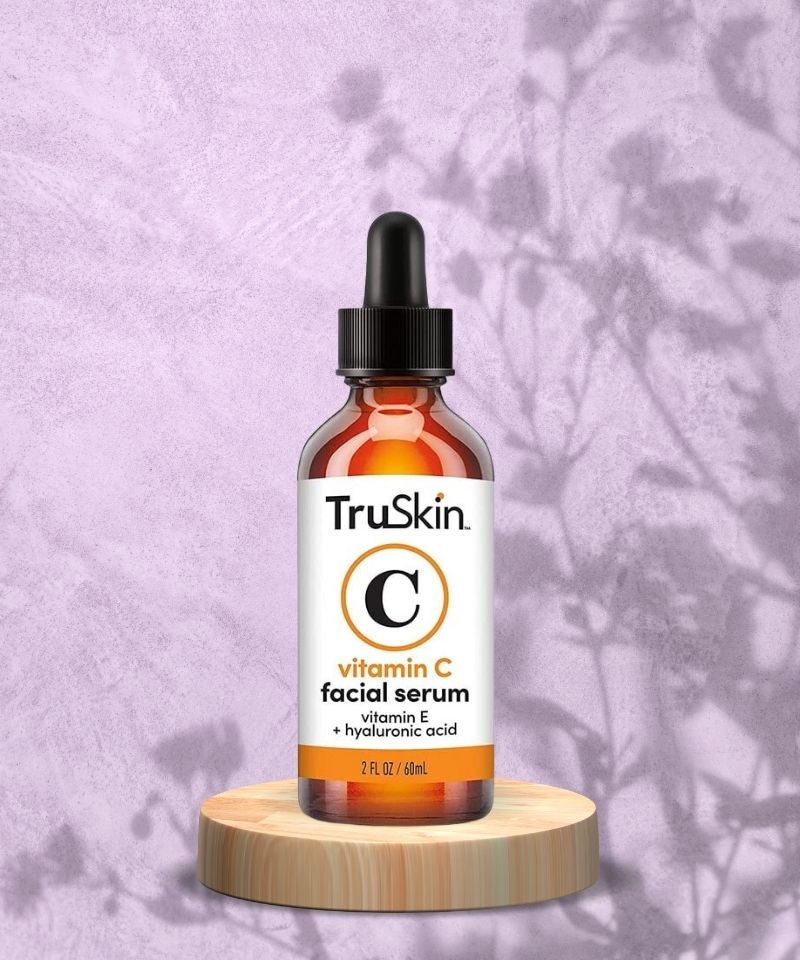
Vitamin C is a fantastic antioxidant that helps regenerate and protect the skin from sunlight, pollution, and other harmful aggressors that cause oxidative stress.
It also helps reduce redness and inflammation and has brightening effects on the skin due to its ability to inhibit melanin production, making it an excellent choice for those dealing with a combination of PIE and PIH.
Best vitamin C serums:
Best for sun-damaged skin: Vivant Skin Care – Pure C + E, $94
Best for all skin types: TruSkin – Vitamin C Serum, $22
Best for signs of aging: SkinCeuticals – C E Ferulic, $182
Azelaic Acid
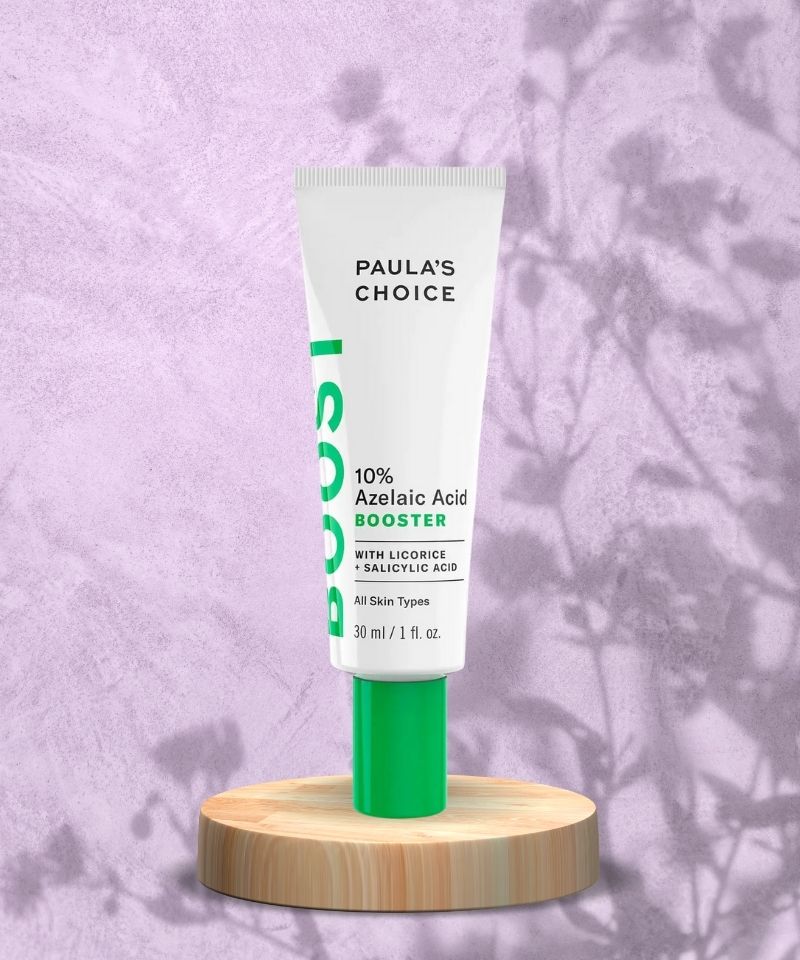
Azelaic acid is a dicarboxylic acid often used to treat acne and manage rosacea symptoms due to its anti-inflammatory, antibacterial, and skin-brightening properties.
Azelaic acid also helps reduce visible redness from broken blood vessels, making it particularly effective for those who want to lighten PIE caused by acne.
Best azelaic acid serums:
Best for all skin types: Paula’s Choice – 10 Azelaic Acid Booster, $39
Best for acne-prone skin: TULA Skincare – Acne Clearing + Tone Correcting Gel, $38
Best for dry, sensitive skin: HoliFrog – Galilee Antioxidant Dewy Drop, $48
Retinol
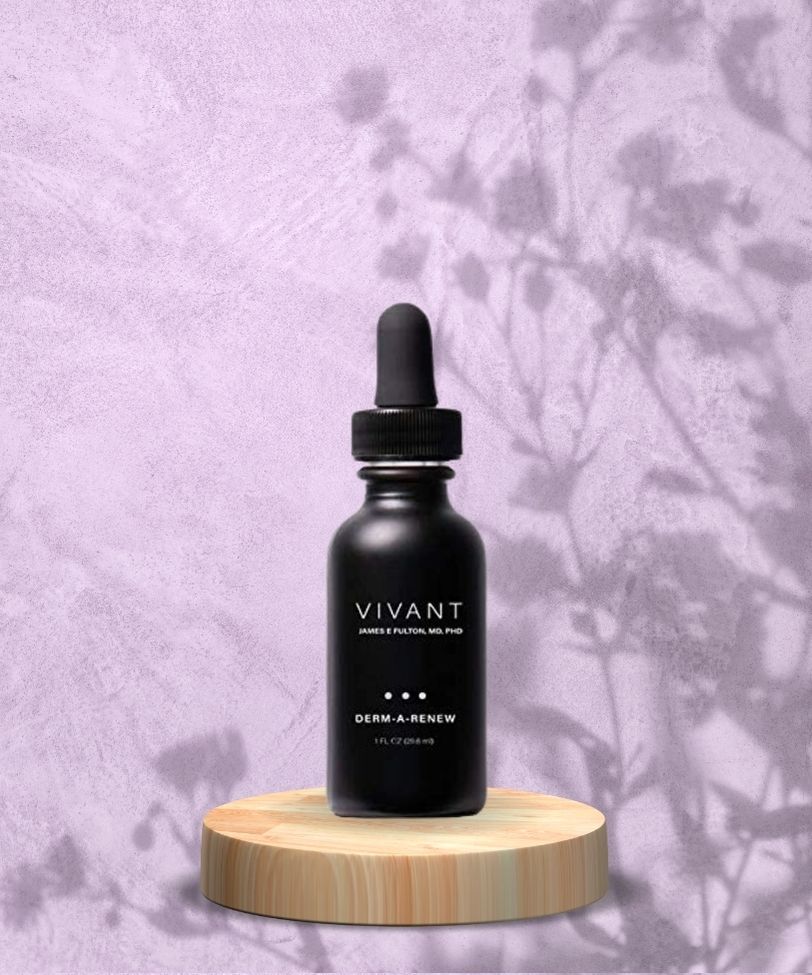
Retinol is one of the best products for lightening PIE, as it works by binding to retinoid receptors in the cells, changing their behavior and ultimately enhancing cellular turnover.
This means that the cells will heal and regenerate faster, leading to reduced inflammation, a strengthened skin barrier, and faded PIE.
Retinol can also clear acne and reduce the chances of future breakouts and PIE forming.
Best retinol serums:
Best for acne: Alastin – Renewal Retinol, $68
Best for sensitive skin: Vivant Skin Care – Derm-A-Renew, $122
Best for mature skin: SkinCeuticals – Retinol 0.5 Refining Night Cream, $88
Green Tea
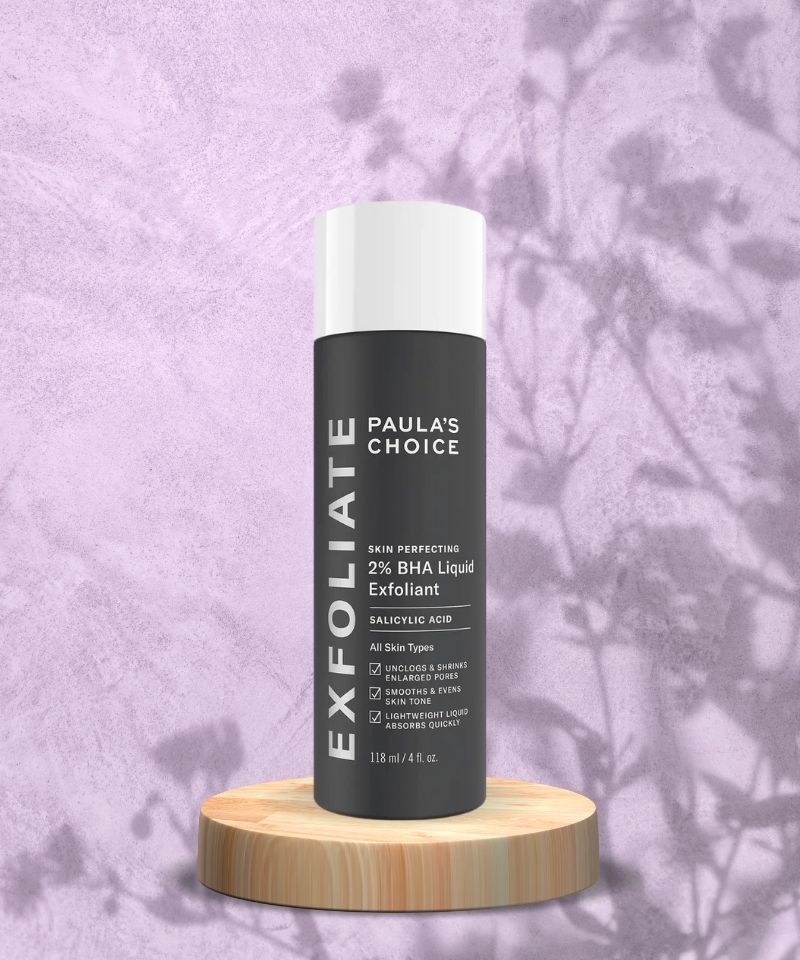
Green tea extract is an antioxidant-rich ingredient with calming properties that can be used to soothe sensitive or irritated skin, as well as inflammatory skin conditions such as acne and PIE.
Green tea is rich in catechins, which are polyphenols that act as potent antioxidants and anti-inflammatory compounds that can reduce redness and inflammation while protecting the skin from environmental damage.
Best green tea products:
Best balancing toner: Herbivore Botanicals – Jasmine Green Tea Balancing Toner, $39
Best exfoliator for all skin types: Paula’s Choice – 2 BHA Liquid Exfoliant, $34
Best for dry, sensitive skin: SkinMedica – Replenish Hydrating Cream, $68
Tretinoin
Besides brightening the skin and reducing the appearance of existing PIE, tretinoin can also prevent it from forming by reducing active acne and strengthening the skin barrier.
Similarly to retinol, tretinoin also works by binding to retinoid receptors in the cells and changing their behavior, influencing them to heal and regenerate faster, which will improve the complexion in various ways, including reducing the depth and severity of wrinkles, along with pigmentary changes, acne scarring, and uneven skin tone.
However, tretinoin is a prescription-strength product that should be used correctly to avoid some of the initial side effects its known for, such as excessive dryness, irritation, peeling, and discomfort.
The Best Professional Treatments for Post-Inflammatory Erythema
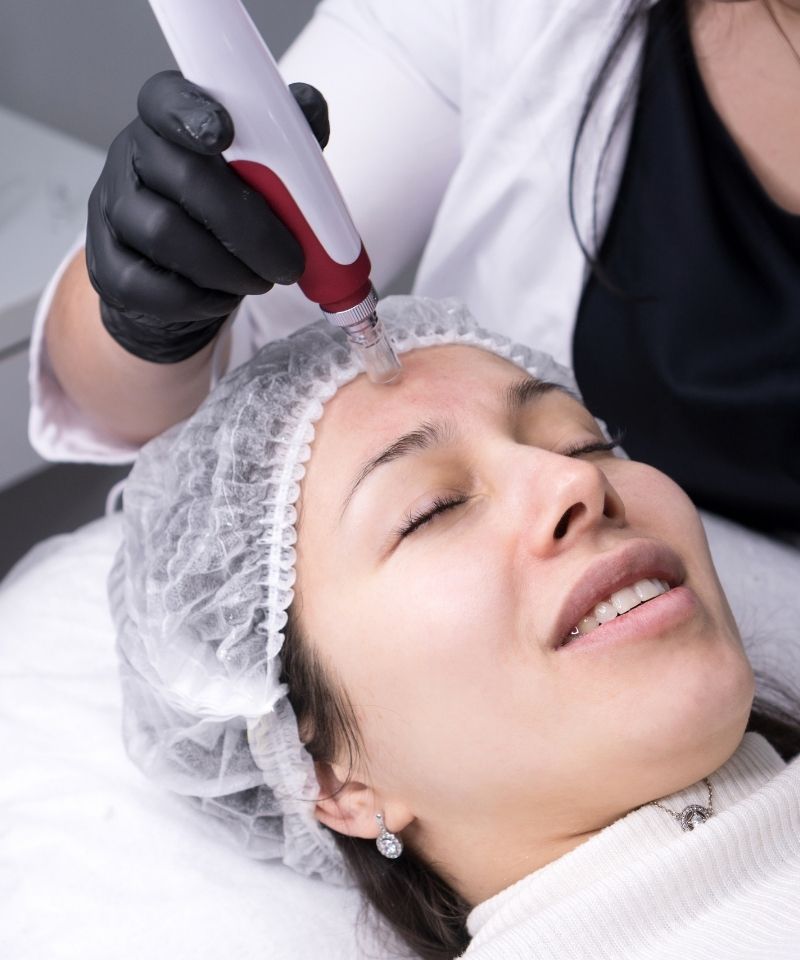
Besides topical products, PIE can be faded with the following in-office treatments:
Microneedling
Microneedling is an aesthetic treatment that involves using a pen-like device with needles to create microscopic wounds in the skin through rapid prickling of the surface.
The tiny holes in the skin stimulate a natural wound-healing response that triggers collagen production, which regulates the phases of wound healing by laying down new tissue at the site of injury, acting as a building block and helping to provide strength and structure to the wound.
In addition to its wound-healing role, collagen also helps regulate the inflammatory response during wound healing by modulating the activity of immune cells, reducing inflammation, and promoting tissue remodeling.
Therefore, by reducing inflammation and promoting healing, microneedling can successfully fade the appearance of PIE and improve skin texture and tone.
Laser
Lasers such as PDL, IPL, and KTP are effective treatments that can target PIE and improve its appearance in as little as one to two sessions.
These lasers emit light with specific wavelengths that target the red pigment in blood vessels, thus causing a constriction of dilated capillaries and reducing visible red spots left by acne.
Additionally, lasers also stimulate collagen production in the deeper layers of the skin, which will help refine skin texture, making them particularly effective for those who are dealing with atrophic acne scars along with PIE and PIH.
How to Prevent Post-Inflammatory Erythema?
Preventing PIE is easier than treating it. Therefore, if you frequently deal with acne, taking the necessary measures to reduce inflammation and avoid further damage is important.
Here’s how to prevent PIE from forming:
Treat Your Acne
Acne is an incredibly common inflammatory skin condition affecting over 90% of people at some point in their lives.
However, it’s also one of the most neglected skin conditions, with many people opting out of taking proactive steps to treat it until it becomes severe, which increases the chances of scarring.
Therefore, if you have acne-prone skin and are dealing with an occasional breakout or consistently have active acne, it’s important not to neglect this condition, as the earlier you treat it, the less likely it is to leave scarring, including PIE.
Consider talking to a professional who will tailor the best treatment plan for you through skincare products for your skin’s needs, as maintenance is vital in preventing future breakouts and, by default, PIE.
Additionally, making diet and lifestyle changes, such as including more antioxidants in your daily menu and reducing stress, can also be beneficial to keep acne breakouts in check.
Allow Your Skin to Heal Before Treating PIE
You may be eager to try various skincare products to target PIE as soon as you see the slightest improvement in your acne.
However, this will cause unsatisfactory results at best and irritation and worsening of your condition at worst, and it’s all because inflammation is still present in the deeper layers of the skin even though you are seeing some improvement superficially.
This is why you should allow your skin to heal properly before attempting to fade PIE by trying multiple new skincare products at once.
For best results, you should consistently have clear skin for at least six months to a year before starting to treat PIE, as waiting for a longer time allows you to ensure that the inflammation is fully subsided and your skin will react positively to any treatments introduced.
In addition, this will also allow your skin barrier to repair and strengthen, which is vital for a healthy complexion and essential for the PIE treatments to work.
Finally, waiting for a longer time will also ensure your skincare routine is suitable for your individual needs, and your skin won’t start to break out again after a few months of using a product.
This is especially recommended if you invest in expensive in-office treatments such as lasers or microneedling, which can cost hundreds of dollars and usually come with downtime and discomfort.
Avoid Picking or Popping Pimples
Picking at or popping your pimples might be one of life’s most satisfactory things, but it will certainly increase your chances of dealing with PIE after the spot heals.
This is because, in order to squeeze the pus out of a pimple, the skin needs to rupture at the tip, leaving a microscopic wound that’s not only at risk of getting infected through bacterial colonization but has also damaged the delicate blood vessels under the skin, and will take much longer to heal while also leaving PIE that likely won’t fade easily.
Avoid Exfoliation
Exfoliation can be a great way to dissolve the cellular debris inside pores and unclog them, reduce acne, improve uneven skin tone, hyperpigmentation, and texture, and even plump out fine lines.
However, PIE is a unique skin concern that cannot be helped and can actually be made worse by exfoliation.
Whether physical with the use of scrubs or chemical with the use of AHAs, BHAs, or any other acid, exfoliating the skin will only worsen the appearance of PIE as they can dry out the skin and cause irritation, further disturbing the fragile vessels under the surface.
Therefore, if you are dealing with PIE as a result of acne, opting for products such as retinoids will help you tackle both issues while also strengthening the skin barrier instead of compromising it by constantly removing the superficial layers of skin cells that serve as a defense against external pathogens, moisture loss, and irritation.
Use Mild Actives Consistently
Using mild actives, such as niacinamide, vitamin C, and azelaic acid consistently in your skincare routine will help you keep acne under control and prevent the damage to blood vessels caused by inflammation which results in PIE.
Therefore, besides your basic skincare routine, make sure to throw in a few of these ingredients, as they can help you keep a clear, healthy, and even complexion down the line.
Apply Sun Protection
Extended and unprotected sun exposure can darken your red spots and make PIE harder to treat.
It will also prolong the process of the discolored marks fading on their own and help this condition stick around on the skin for longer.
Therefore, if you want to reduce and prevent further PIE from forming and remaining on the skin for a long time, make sure to apply sunscreen with SPF 30 or higher daily.
Frequently Asked Questions
Why Do I Get PIE So Easily?
The main reason you get PIE so easily is that your blood vessels have dilated due to carrying increased amounts of white blood cells to oxygenate and empower the healing process of a skin injury.
Why is PIE So Hard to Treat?
PIE results from dilated or broken blood vessels, which take time to recover. Additionally, poor skincare routine, inadequate diet, and certain lifestyle habits, such as lack of sleep or excessive stress, can all contribute to inflammation and make PIE harder to treat.
Does PIE Go Away on Its Own?
In many cases, PIE will fade on its own as the broken blood vessels underneath the skin recover over time.
However, you can speed up the process by following a proper skincare routine, applying sunscreen when outside, eating an anti-inflammatory diet, and steering clear from over-exfoliating and popping pimples.
Additionally, consistently applying topical treatments such as retinoids, niacinamide, and azelaic acid will fade PIE faster than it would on its own while also preventing it from forming down the line.
How Long Does PIE Last?
PIE spots can last months and even years if left untreated and unprotected. They will eventually fade on their own; however, you can speed this up by using topical products such as retinoids, niacinamide, and azelaic acid to soothe inflammation, repair the broken capillaries, and reduce redness, as well as sunscreen to prevent red spots from becoming darker and harder to fade.
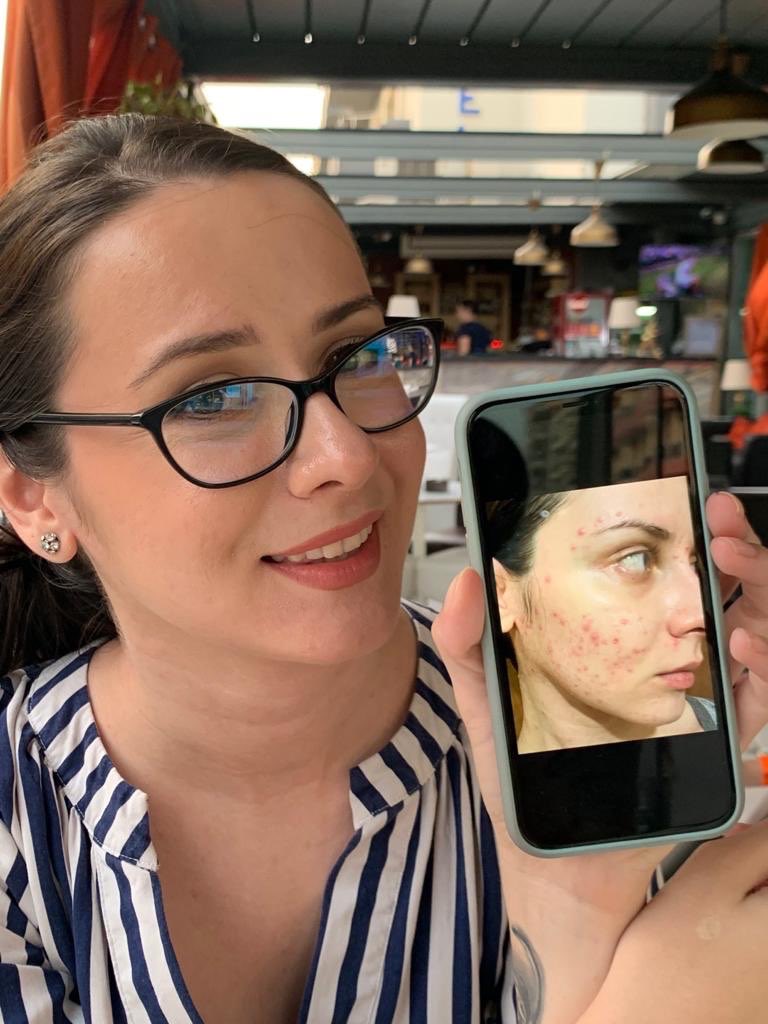
Tired of STRUGGLING with ACNE and its lingering aftermath?
Post-inflammatory erythema (PIE) can be a frustrating reminder of past breakouts, but fear not – I have the solution you’ve been searching for!
Welcome to “The Acne Solution,” a comprehensive course designed to help you achieve clear, flawless complexion skin and bid farewell to those stubborn red marks.
Join my course today, and don’t let acne (and its aftermath) hold you back any longer – take control of your skincare and transform your life.

My name is Simone and I am a certified skin specialist. I created this website to teach my readers how to take great care of their skin and I also like to occasionally share my honest opinions on skincare products I’ve tried. You can learn more about me here.
